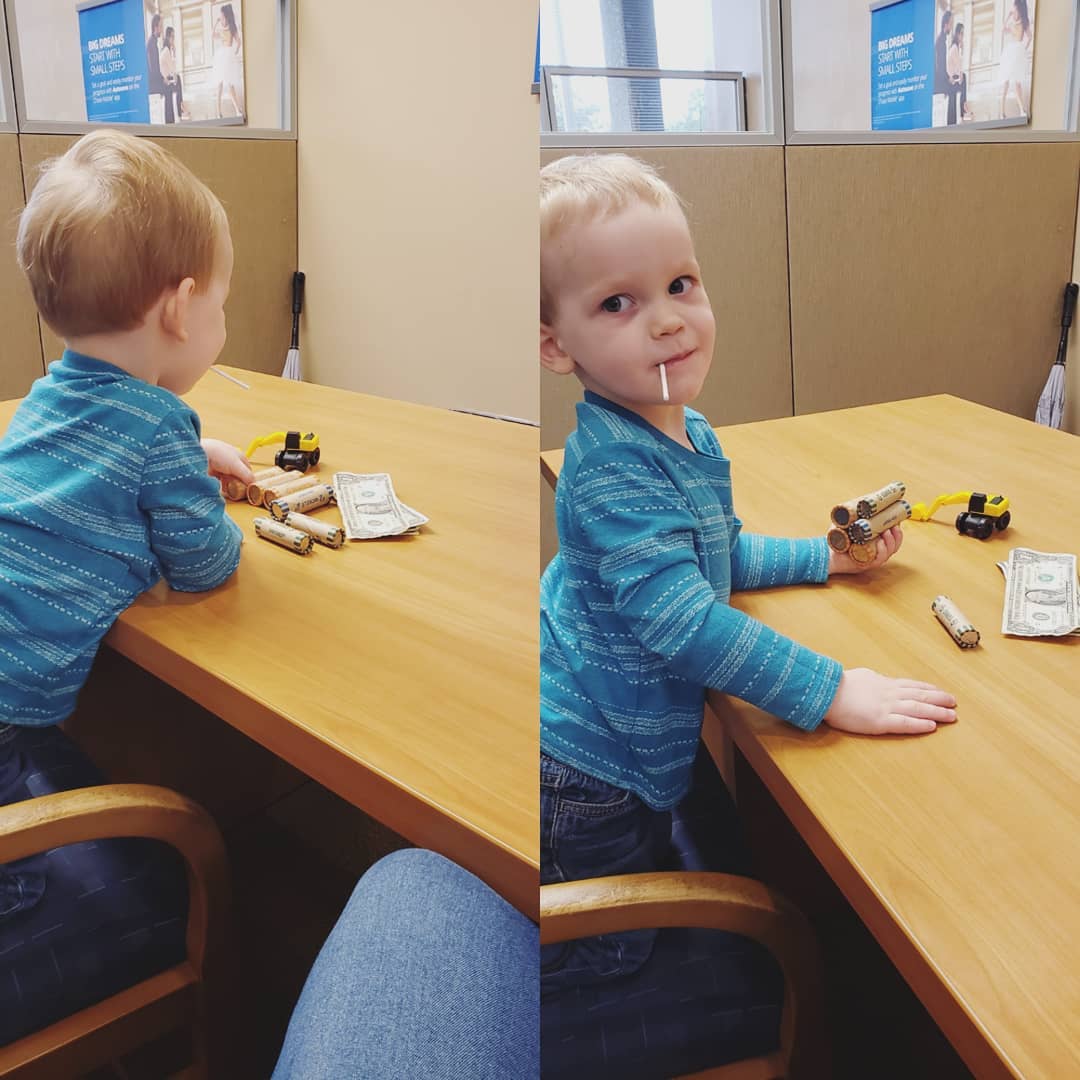From Play-Doh To Real Dough :: Sculpting Financially Savvy Kids
Let’s face it, no one wants to talk money! It can be such a snooze-fest. Sometimes, your eyes may glaze over, with the awkwardness of the money talk and you might want to escape the conversation.
I think this was true for my parents because I can’t remember one instance where my parents sat me down and talked about finance. There was no class in high school. No adult telling me about savings, interest, credit score etc.
So how do we start?
For us, we started early. Our son Jackson was 3 when we took him to the bank to open his very own savings account. 
His PaPa, my stepdad, had been rolling coins with him for a few months before we headed to the bank. So Jackson brough his rolled coins and birthday money to Chase bank where a very nice teller walked him through opening his savings account. It was the cutest thing ever. Plus, he got a sucker so he was a happy camper– or should I say customer?
Here is a list of things our bank taught us and things I did that may help you with your journey of raising financially savvy kids.
Introducing kids to the concept of money doesn’t have to be overly complex. Here’s a simple way to explain it:
- Money’s Purpose: Start by explaining that money is what we use to buy things we need or want. It’s like a special “ticket” we exchange for toys, food, or other items.
- Value and Exchange: Use simple examples to illustrate value. For instance, explain that a toy costs a certain amount of money, like $10. Then, show how when someone hands over $10, they get the toy in return.
- Different Types of Money: Show the various forms money can take—coins, paper bills, or even a card. Explain that they all represent the same thing: the ability to buy something. For younger children watch closely when you introduce coins for obvious safety reasons.
- Government’s Role: For older kiddos, mention that the government prints the bills and make rules about how money works.
- Earning Money: You can also explain that adults work to earn money. They do jobs, and in return, they get paid with money. This money helps them buy things they need for themselves and their families. For my son, I tried to tell him that if someone makes $20/hr that the $40 toy he wants costs me not only money but also 2 hours of my time – to try and make this make more sense to him.
- Careful Choices: Explain to older children that even though people may have good jobs they have to make careful choices on what they can spend money on each month.
Learning about money can be as fun as playing with play dough or play money. Just like shaping and molding play dough, understanding money involves exploring, making decisions, and sometimes even creating something new. So, I hope this encouraged you to help shape your kids financial skills with creativity and curiosity.



















